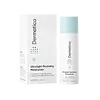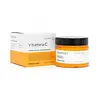What's inside
What's inside
 Key Ingredients
Key Ingredients

 Benefits
Benefits

 Concerns
Concerns

No concerns
 Ingredients Side-by-side
Ingredients Side-by-side

Water
Skin ConditioningGlycerin
HumectantSqualane
EmollientGlyceryl Stearate
EmollientCetearyl Alcohol
EmollientShea Butter Ethyl Esters
EmollientNiacinamide
SmoothingDisodium Cetearyl Sulfosuccinate
CleansingPanthenol
Skin ConditioningSodium Ascorbyl Phosphate
AntioxidantCeramide NP
Skin ConditioningCeramide EOP
Skin ConditioningCeramide AP
Skin ConditioningTocopheryl Acetate
AntioxidantSodium Hyaluronate
HumectantPhenoxyethanol
PreservativeSodium Lauroyl Lactylate
EmulsifyingAcrylates/C10-30 Alkyl Acrylate Crosspolymer
Emulsion StabilisingCholesterol
EmollientPhytosphingosine
Skin ConditioningSodium Hydroxide
BufferingCarbomer
Emulsion StabilisingXanthan Gum
EmulsifyingWater, Glycerin, Squalane, Glyceryl Stearate, Cetearyl Alcohol, Shea Butter Ethyl Esters, Niacinamide, Disodium Cetearyl Sulfosuccinate, Panthenol, Sodium Ascorbyl Phosphate, Ceramide NP, Ceramide EOP, Ceramide AP, Tocopheryl Acetate, Sodium Hyaluronate, Phenoxyethanol, Sodium Lauroyl Lactylate, Acrylates/C10-30 Alkyl Acrylate Crosspolymer, Cholesterol, Phytosphingosine, Sodium Hydroxide, Carbomer, Xanthan Gum
Water
Skin ConditioningGlycerin
HumectantPropanediol
SolventOryza Sativa Bran Oil
EmollientCetyl Alcohol
EmollientStearyl Stearate
EmollientCaprylic/Capric Triglyceride
MaskingGlyceryl Stearate
EmollientBetaine
HumectantCitrus Aurantium Dulcis Fruit Water
MaskingAscorbyl Methylsilanol Pectinate
AntioxidantSodium Allantoin PCA
Skin ConditioningSodium PCA
HumectantGlutamic Acid
HumectantGlycine
BufferingSerine
MaskingAlanine
MaskingArginine
MaskingLysine Hcl
Skin ConditioningProline
Skin ConditioningThreonine
Undaria Pinnatifida Extract
Skin ConditioningEnteromorpha Compressa Extract
Skin ProtectingPorphyra Umbilicalis Extract
Skin ConditioningLithothamnion Calcareum Extract
Skin ConditioningFucus Vesiculosus Extract
EmollientTocopherol
AntioxidantCrambe Abyssinica Seed Oil Phytosterol Esters
EmulsifyingRhus Verniciflua Peel Wax
Sodium Lactate
BufferingSodium Phytate
Ethylhexylglycerin
Skin ConditioningCeteth-20
CleansingSteareth-20
CleansingSodium Acrylates Crosspolymer-2
AbsorbentMethylpropanediol
SolventPEG-75 Stearate
Caprylyl Glycol
EmollientSodium Benzoate
MaskingPotassium Sorbate
PreservativePhenoxyethanol
PreservativeWater, Glycerin, Propanediol, Oryza Sativa Bran Oil, Cetyl Alcohol, Stearyl Stearate, Caprylic/Capric Triglyceride, Glyceryl Stearate, Betaine, Citrus Aurantium Dulcis Fruit Water, Ascorbyl Methylsilanol Pectinate, Sodium Allantoin PCA, Sodium PCA, Glutamic Acid, Glycine, Serine, Alanine, Arginine, Lysine Hcl, Proline, Threonine, Undaria Pinnatifida Extract, Enteromorpha Compressa Extract, Porphyra Umbilicalis Extract, Lithothamnion Calcareum Extract, Fucus Vesiculosus Extract, Tocopherol, Crambe Abyssinica Seed Oil Phytosterol Esters, Rhus Verniciflua Peel Wax, Sodium Lactate, Sodium Phytate, Ethylhexylglycerin, Ceteth-20, Steareth-20, Sodium Acrylates Crosspolymer-2, Methylpropanediol, PEG-75 Stearate, Caprylyl Glycol, Sodium Benzoate, Potassium Sorbate, Phenoxyethanol
Ingredients Explained
These ingredients are found in both products.
Ingredients higher up in an ingredient list are typically present in a larger amount.
Glycerin is already naturally found in your skin. It helps moisturize and protect your skin.
A study from 2016 found glycerin to be more effective as a humectant than AHAs and hyaluronic acid.
As a humectant, it helps the skin stay hydrated by pulling moisture to your skin. The low molecular weight of glycerin allows it to pull moisture into the deeper layers of your skin.
Hydrated skin improves your skin barrier; Your skin barrier helps protect against irritants and bacteria.
Glycerin has also been found to have antimicrobial and antiviral properties. Due to these properties, glycerin is often used in wound and burn treatments.
In cosmetics, glycerin is usually derived from plants such as soybean or palm. However, it can also be sourced from animals, such as tallow or animal fat.
This ingredient is organic, colorless, odorless, and non-toxic.
Glycerin is the name for this ingredient in American English. British English uses Glycerol/Glycerine.
Learn more about GlycerinGlyceryl Stearate is a mix of glycerin and stearic acid.
It is used to stabilize the mixing of water and oil ingredients. By preventing these ingredients from separating, it can help elongate shelf life. It can also help thicken the product's texture.
As an emollient, it helps soften skin and supports barrier-replenishing ingredients.
In cosmetics, Glyceryl Stearate is often made from vegetable oils or synthetically produced.
This ingredient may not be fungal-acne safe
Fun fact: The human body also creates Glyceryl Stearate naturally.
Learn more about Glyceryl StearatePhenoxyethanol is a preservative that has germicide, antimicrobial, and aromatic properties. Studies show that phenoxyethanol can prevent microbial growth. By itself, it has a scent that is similar to that of a rose.
It's often used in formulations along with Caprylyl Glycol to preserve the shelf life of products.
Water. It's the most common cosmetic ingredient of all. You'll usually see it at the top of ingredient lists, meaning that it makes up the largest part of the product.
So why is it so popular? Water most often acts as a solvent - this means that it helps dissolve other ingredients into the formulation.
You'll also recognize water as that liquid we all need to stay alive. If you see this, drink a glass of water. Stay hydrated!
Learn more about Water